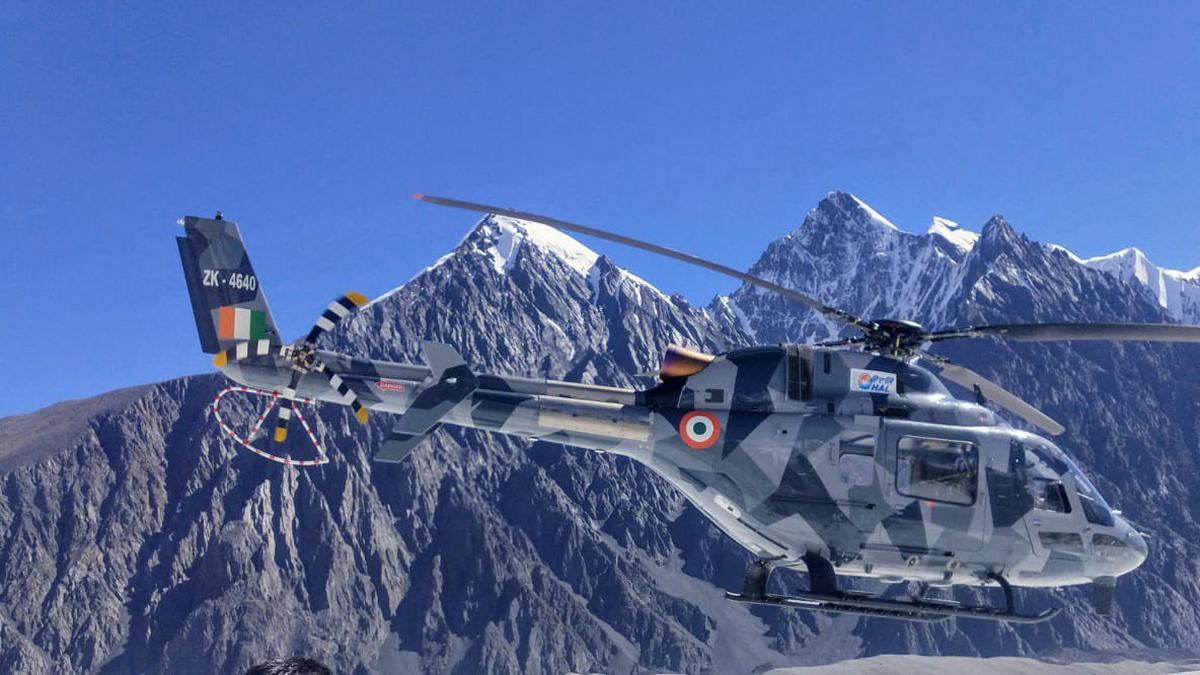Indian army inducted light combat helicopter
Anti-tank missile completes all trials
The helicopter-launched Nag Anti-Tank Guided Missile (ATGM), Helina, being developed indigenously, has completed all trials and the process for issuing of Acceptance of Necessity (AoN) by the Army has started, said Dr. Sachin Sood, Project Director of Helina and Dhruvastra at the Defence Research and Development Laboratory (DRDL) Hyderabad, a laboratory of the Defence Research and Development Organisation (DRDO).
“The launcher and missile are ready. There are some Human Machine Interface (HMI) to be realised which are going on now,” Dr. Sood told
The Hindu . While the cost estimate is yet to be done, each missile is expected to cost under ₹1 crore and initially around 500 missiles and 40 launchers will be required, he says.
Once the AoN is issued, the Request for Proposal (RFP) will be issued. Some firing trials will be done from the first production lot by the Army at a later stage.
Helina is a third generation fire and forget class ATGM mounted on an indigenous Advanced Light Helicopter (ALH) and has a minimum range of 500 m and a maximum range of 7 km. All issues with the minimum range have been sorted out and the integration with other weapons on the platform is over, according to Dr. Sood.
Stating that the Air Force had asked for feasibility of integrating the Helina on the soon-to-be inducted Light Combat Helicopter (LCH), Dr. Sood said this would be done and would bring in economies of scale in the production of the missile. “There is also very good export potential,” he said.
For that the platforms on which it can be integrated have to be identified. The possibilities of exports were discussed with the Secretary, Defence Production as well when he visited the India pavilion at the Army-2021 expo in Moscow last month.
Live firing
Talking of the trials in February during which live firing was carried out, Dr. Sood said that for the first time firing from maximum forward speed from a moving target, an ALH, was demonstrated as also targeting from a top angle. “Final configuration with warhead demonstrated good penetration into the target. Other operational missions like minimum range were also demonstrated,” he said on the trials.
All the capabilities of the seeker, a critical part of the missile, were checked and cleared. In one mission the target was acquired at a range of 7 km and was fired on at 6 km range, he said. During these trails the stability of the platform and the separation of the missile from it had also been demonstrated.
On the difference between Nag ATGM of the Army and Helina, which is air-launched, Dr. Sood said they had different firing mechanisms as the latter had increased range. “It is a fire and forget missile. Once the Electro-Optic (EO) system of ALH identifies the target, it automatically hands over target to the missile. It is lock-on before launch,” he explained.
While the missile was developed by the DRDO, the integration on ALH was done by the Hindustan Aeronautics Limited (HAL) and the Bharat Dynamics Limited (BDL) is the production agency. During the last trial, BDL teams were involved and their teams were now being trained, Dr. Sood said.
Private industry
Majority of the missile is indigenous with significant sourcing from the private industry. For instance, the launcher, rocket motors and onboard power supply on the missile are manufactured by Hyderabad-based companies, propulsion by the Ordnance Factory Bhandara, control system by the Research Centre Imarat, warhead jointly by the Armament Research and Development Establishment (ARDE) and the Ordnance Factory Board and seeker by the Bharat Electronics Limited, Machilipatnam, and BDL. “The supply chain has been established,” Dr. Sood said.
Parallelly, an Air Force version Dhruvastra was also under development for which some trials had already been conducted. It would have an Air to Ground role other than anti-tank role, Dr. Sood added.
Process for issuing Acceptance of Necessity by Army for Helina has started, says Project Director

www.thehindu.com

www.thehindu.com
